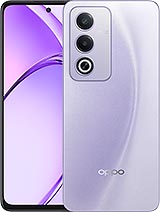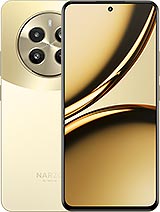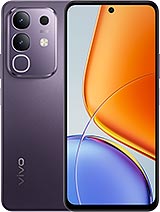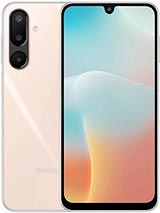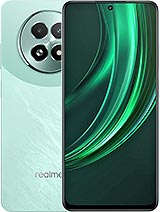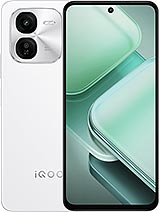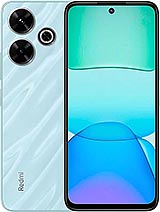iQOO Z9x alternatives
Tap above to see alternatives.
Redmi 13 alternatives
Tap above to see alternatives.
Your comparison result will be shown here.
General
Launch Date
May 16, 2024
July 09, 2024
Availability
Available Now
Available Now
OS
Android 14
Android 14
Custom UI
Funtouch OS
HyperOS
OS Updates
2 Years
2 Years
Security Updates
3 Years
3 Years
Body
Dimensions
165.7 x 76 x 8 mm
168.6 x 76.3 x 8.2 mm
Thickness
8 mm
8.2 mm
Weight
199 g
205 g
Build Details
Mineral Glass
IP Rating
IP64
IP53
Display
Size
6.72 inches
6.79 inches
Type
IPS LCD
IPS LCD
Refresh Rate
120 Hz
120 Hz
Peak Brightness
1000 nits
550 nits
Resolution
1080x2408 pixels
1080x2460 pixels
Pixel Density
393 ppi
396 ppi
Aspect Ratio
20:9
Screen to Body Ratio
86.4 %
85.1 %
Protection
Gorilla Glass 3
Performance
Chipset
Qualcomm Snapdragon 6 Gen 1
Qualcomm Snapdragon 4 Gen 2 AE
Process Size
4 nm
4 nm
CPU
Octa-core
4x2.2 GHz Cortex-A78
4x1.8 GHz Cortex-A55
4x2.2 GHz Cortex-A78
4x1.8 GHz Cortex-A55
Octa-core
2x2.2 GHz Cortex-A78
6x2.0 GHz Cortex-A55
2x2.2 GHz Cortex-A78
6x2.0 GHz Cortex-A55
GPU
Adreno 710
Adreno 613
RAM & Storage
4GB 128GB (UFS 2.2)
6GB 128GB (UFS 2.2)
8GB 128GB (UFS 2.2)
6GB 128GB (UFS 2.2)
8GB 128GB (UFS 2.2)
6GB 128GB (UFS 2.2)
8GB 128GB (UFS 2.2)
8GB 256GB (UFS 2.2)
8GB 128GB (UFS 2.2)
8GB 256GB (UFS 2.2)
RAM Type
LPDDR4X
LPDDR4X
Expandable Memory
Camera
Main Camera
50 MP
f/1.8, (wide), 1/1.95", 0.8µm, PDAF
2 MP
f/2.4, (depth)
f/1.8, (wide), 1/1.95", 0.8µm, PDAF
2 MP
f/2.4, (depth)
108 MP
f/1.8, (wide), 0.64µm, PDAF
2 MP
(depth)
f/1.8, (wide), 0.64µm, PDAF
2 MP
(depth)
OIS
No
No
Features
LED flash, panorama, HDR, Digital Zoom, Auto Flash, Face detection, Touch to focus
LED flash, HDR, Digital Zoom, Auto Flash, Face detection, Touch to focus, Voice Shutter
Video Recording
4K
1080p
1080p
1080p@30fps
Video Recording Features
gyro-EIS
Selfie Camera
8 MP
f/2.1, (wide)
f/2.1, (wide)
13 MP
f/2.5, (wide)
f/2.5, (wide)
Selfie Features
HDR
Selfie Video Recording
1080p@30fps
1080p@30fps
Connectivity
SIM
Dual SIM, GSM+GSM
SIM1: Nano, SIM2: Nano (Hybrid)
SIM1: Nano, SIM2: Nano (Hybrid)
Dual SIM, GSM+GSM
SIM1: Nano, SIM2: Nano (Hybrid)
SIM1: Nano, SIM2: Nano (Hybrid)
SIM 1 5G Bands
8 Bands
FDD: N1, N3, N5, N8, N28
TDD: N40, N77, N78
FDD: N1, N3, N5, N8, N28
TDD: N40, N77, N78
7 Bands
FDD: N1, N3, N5, N8, N28
TDD: N40, N78
FDD: N1, N3, N5, N8, N28
TDD: N40, N78
SIM 2 5G Bands
8 Bands
FDD: N1, N3, N5, N8, N28
TDD: N40, N77, N78
FDD: N1, N3, N5, N8, N28
TDD: N40, N77, N78
7 Bands
FDD: N1, N3, N5, N8, N28
TDD: N40, N78
FDD: N1, N3, N5, N8, N28
TDD: N40, N78
VoLTE
Yes
Yes
Wi-Fi
Wi-Fi 5
Wi-Fi 5
Wi-Fi Details
802.11 a/b/g/n/ac 5GHz, MIMO
802.11 a/b/g/n/ac 5GHz
Wi-Fi Features
Mobile Hotspot
Mobile Hotspot
USB
USB Type-C 2.0, OTG
USB Type-C
Bluetooth
5.1
5.3
NFC
No
No
GPS
Yes with A-GPS, Glonass
Yes with A-GPS, Glonass
Infrared
Yes
Yes
UWB (Ultra Wideband)
No
No
Battery
Capacity
6000 mAh
5030 mAh
Type
Li-ion
Removable
No
No
Wired charging
44W
33W
Charging Speed
50% in 30 min
Wireless Charging
No
No
Reverse Wireless Charging
No
No
Charger in the Box
Yes
Yes
Sound
Stereo Speakers
Yes
No
3.5mm Headphone Jack
Yes
Yes
FM Radio
No
Yes
Extra Features
Sensors
Fingerprint (side-mounted), accelerometer, gyro, proximity, compass
Fingerprint (side-mounted), accelerometer, compass
Others
Virtual proximity sensing
Colors and Pricing
Colors
Tornado Green, Storm Grey
Black Diamond, Hawaiian Blue, Orchid Pink
Price in India
₹13500
₹13999
FAQs
In this comparison, the iQOO Z9x with the Qualcomm Snapdragon 6 Gen 1 (4nm) performs better than the Redmi 13 with the Qualcomm Snapdragon 4 Gen 2 AE (4nm), thanks to its more efficient chipset.
Both phones offer the same OS update support and receive security updates for the same duration.
Both phones use LCD panels. They have the same 120 Hz refresh rate. iQOO Z9x also has a brighter display with 1000 nits, improving outdoor visibility. These phones have the same resolution.
iQOO Z9x has a larger 6000 mAh battery for longer usage. iQOO Z9x supports faster wired charging at 44W.
iQOO Z9x offers better water and dust resistance with an IP64 rating.


